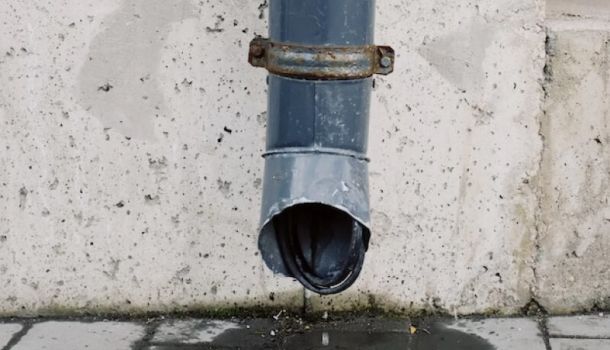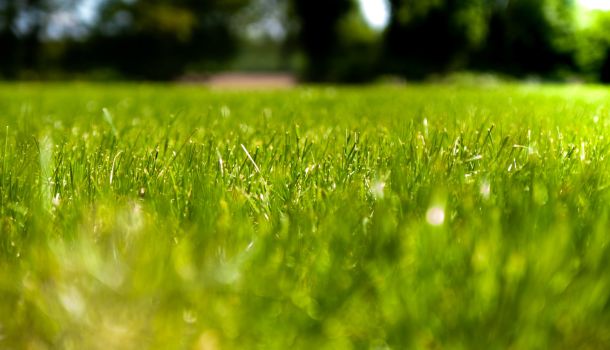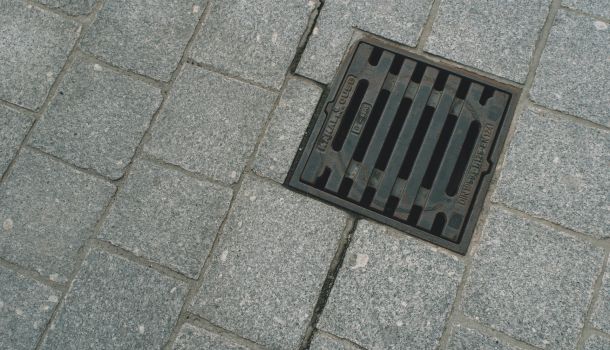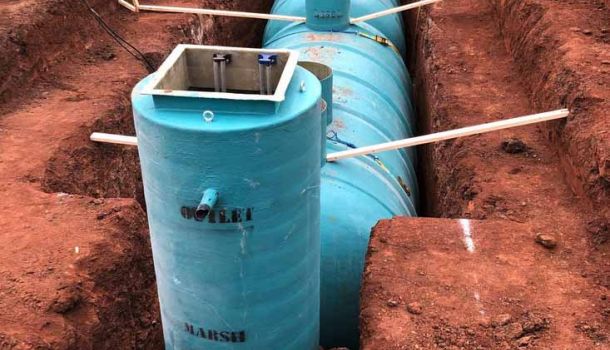How to clear blocked drains outside?

Blocked drains outside your home can lead to various issues, from property damage to unpleasant odours. Understanding the common causes of these blockages, such as tree roots, debris accumulation, and foreign objects, is crucial in effectively addressing the problem. The quick resolution of outdoor drain blockages is essential to prevent water accumulation and health hazards and to maintain optimal drainage systems.
In this blog, we will explore practical strategies for drain unblocking outside, offering insights into resolving this common yet impactful household issue of an outside blocked drain.
Understanding the Causes of Blockages
To understand how to deal with unblocking drains, it is crucial to understand the root causes of these drain blockages. By gaining insight into the factors that contribute to drain blockages, you can develop proactive strategies to prevent such occurrences.
From the buildup of outdoor debris to the infiltration of tree roots and the improper disposal of grease, comprehending these causes empowers individuals to take informed steps towards maintaining clear and functional outdoor drainage systems. Let's delve into the typical culprits behind a drain blocked outside and explore preventive measures to ensure optimal drainage performance.
-
Tree Roots and Vegetation Intrusion
Tree roots and invasive vegetation can infiltrate outdoor drain pipes, causing blockages and hindering water flow. As these roots grow, they can exert significant pressure on the pipes, leading to cracks and breakages, exacerbating the blockage issue.
-
Accumulation of Debris and Organic Matter
Over time, outdoor drains can accumulate various forms of debris such as leaves, dirt, and other organic matter. This buildup can restrict the water flow, ultimately resulting in blockages and potential flooding during heavy rainfall.
-
Foreign Objects Causing Obstructions
Foreign objects, ranging from small toys to solid waste materials, can inadvertently find their way into outdoor drain systems, leading to obstructions. These items can lodge themselves within the pipes, impeding the flow of water and causing blockages that are challenging to clear.
Why is it important to clear your outdoor drains?
It is crucial to clear blocked drains outside due to several significant reasons. When gutters are clogged, water flow is obstructed, increasing the likelihood of sewage backup and posing health risks due to bacteria and germs. Neglecting to keep drains clear of accumulations can lead to blockages, causing potential damage and costly repairs.
Regular cleaning of drains is essential in maintaining a healthy plumbing system, reducing foul odours, preventing plumbing issues, and ultimately creating a safer and more hygienic environment. By clearing out debris and buildup from drains, property owners can protect their plumbing systems from blockages, ensuring a smooth flow of water and averting potential problems. Regular maintenance and cleaning of outdoor drains prevent emergencies and contribute to cost-efficiency in the long run.
Tools and Equipment
Cleaning outside drains effectively requires using specific tools and equipment tailored to address various aspects of the maintenance process. Let's take a look at the essential tools and equipment for cleaning outside drains:
-
Hand Tools
-
Drain Rods: Used for manually clearing blockages and debris from drains.
-
Drain Scoop: Ideal for removing leaves, twigs, and other debris from drain openings.
-
Drain Scraper: Helps dislodge and remove hardened or compacted materials from the drainpipe walls.
-
High-Pressure Water Jet: An effective tool for clearing stubborn blockages and buildup within drain pipes.
-
Drain Snake: Designed to reach deep into drains to break apart and clear obstructions that are out of reach of simpler tools.
-
Wet/Dry Vacuum: Useful for removing standing water and loose debris from drain openings.
-
Chemical Cleaners: Specialised drain cleaning solutions designed to break down organic matter, grease, and other substances causing blockages.
Safety Precautions and Protective Gear
Before commencing any outdoor drain clearing activities, it's vital to prioritise safety precautions. This includes wearing appropriate protective gear such as gloves, goggles, and waterproof boots to safeguard against potential exposure to contaminants and sharp objects. Furthermore, ensuring proper ventilation in the work area and exercising caution when using tools can significantly reduce the risk of accidents or injuries.
So, how do you clear blocked outdoor drains?
Maintaining clear and functional outdoor drains is essential for adequate water drainage and preventing potential flooding and property damage. Let's look at this comprehensive step-by-step guide to efficiently clear blocked outdoor drains and ensure optimal drainage performance.
Guide on how to Clear Blocked Drains
1) Initial Assessment of the Blockage
To initiate the clearing process for a blocked outdoor drain, it's crucial to conduct an initial assessment of the affected area. Follow these essential steps to gauge the nature and extent of the blockage accurately:
Visual Inspection
Commence the assessment by visually examining the affected drain area. Use a flashlight to illuminate the drain opening and peer into the drain to identify any visible signs of blockage or obstruction.
Nature of Blockage
Determine the characteristics of the blockage, such as the type of debris present or any indications of root intrusion. Note any peculiarities observed during the assessment, as this information will guide subsequent clearing methods.
Extent of Blockage
Assess the extent to which the blockage is impeding water flow and drainage. Take note of any standing water or slow drainage, as these indicate the blockage's severity.
Potential Causes
While inspecting the drain, be attentive to potential blockage causes, such as accumulated leaves, silt, or tree roots infiltrating the drain pipe. Understanding the underlying causes will inform the appropriate clearing approach.
2. Unblocking the drain
Use of Drain Rods or Augers for Obstruction Removal
When faced with an accessible blockage in outdoor drains, the strategic use of drain rods or augers can effectively dislodge and remove obstructing materials. Follow these key steps to employ drain rods or augers for targeted obstruction removal:
Accessible Blockage
If the blockage is within reach and visible, carefully introduce drain rods or augers into the drain opening to initiate the clearing process.
Gentle Yet Firm Technique
Utilise a gentle yet firm twisting when manoeuvring the rods or augers through the drain pipes. This technique aids in navigating through the system while exerting the necessary force to break apart the blockage.
Gradual Progression
Gradually extend the reach of the drain rods or augers as needed to navigate deeper into the drain system and effectively address the blockage at its source.
Persistence and Precision
Exercise patience and precision throughout the process, ensuring that the rods or augers are methodically used to dislodge and remove the obstructing materials without causing damage to the drain pipes.
By employing drain rods or augers with a calculated approach, property owners can efficiently tackle accessible blockages in outdoor drains, restoring unimpeded water flow and drainage.
3) Application of Environmentally Friendly Drain Cleaners
In pursuing eco-conscious and effective blockage removal for outdoor drains, applying advanced drain unblocking equipment and environmentally friendly solutions can play a pivotal role in dissolving residual organic matter contributing to the blockage. Here's how to conscientiously utilise these cleaners for optimal results:
Use of Biodegradable Drain Cleaners
When addressing drain blockages, prioritise using biodegradable and environmentally safe drain cleaning products to mitigate harm to the ecosystem. Opting for such products aligns with eco-conscious practices and contributes to the preservation of environmental integrity.
Prevention Through Best Practices
Preventive measures and regular maintenance are important to diminish the necessity for harsh chemical interventions in drain-clearing processes. By prioritising preventive strategies, property owners can reduce their reliance on environmentally impactful solutions, thereby lessening the overall environmental footprint.
Responsible Disposal of Debris and Chemical-Free Alternatives
Debris Disposal
Ensure the proper disposal of debris removed during drain clearing by adhering to local waste management guidelines. Responsible disposal practices safeguard against environmental contamination, upholding environmental stewardship throughout the drain clearing process.
Chemical-Free Alternatives
Promote using mechanical methods, such as drain rods and augers, alongside hot water and enzymatic solutions as effective alternatives to chemically intensive drain-clearing practices. Encouraging the adoption of these chemical-free alternatives underscores a commitment to eco-friendly approaches while effectively addressing drain blockages.
Flushing with Water and Monitoring Flow Restoration
Following the application of an environmentally friendly drain cleaner, it's essential to flush the drain using copious amounts of water. This step serves to effectively wash away any loosened debris and verify the restoration of normal flow within the drain system. Here's a guide on executing this critical post-cleaning procedure:
Thorough Water Flushing
After applying the drain cleaner, flush the drain thoroughly with copious amounts of water to facilitate the removal of loosened debris and promote unimpeded flow within the system.
Vigilant Flow Monitoring
Monitor the drain attentively following the water flushing process to confirm that the water flow has been fully restored. This vigilant observation serves as a crucial indicator of the successful clearing of the blockage.
Indications of Successful Clearing
Observe the drainage patterns and assess the flow rate to discern signs of normalised water movement, signalling the effective alleviation of the blockage.
Property owners can thoroughly restore normal drainage, affirming the successful clearing of the blockage by diligently flushing the drain with water and vigilantly monitoring the subsequent flow patterns.
Preventive Measures and Maintenance
Tips for Preventing Outdoor Drain Blockages
-
Install drain guards or covers to prevent debris and large objects from entering the drains.
-
Regularly clear away leaves, twigs, and other outdoor debris from around drain openings to minimise the risk of blockages.
-
Avoid planting trees with invasive root systems near outdoor pipes to mitigate the potential for root intrusion.
-
Educate household members about properly disposing of items to prevent foreign objects from being inadvertently washed into the drains.
Regular Maintenance Practices to Minimise Blockage Recurrence
-
Schedule periodic professional inspections of outdoor drains to detect and address potential blockage issues before they escalate.
-
Implement a routine maintenance schedule for drain cleaning, especially during the fall season when leaves and debris accumulation are prevalent.
-
Consider utilising enzymatic drain maintenance products to help break down organic matter and maintain optimal drain flow.
-
Conduct proactive pipe flushing using high-pressure water jetting equipment to remove accumulated sediment and maintain clear drainage pathways.
Professional Assistance
Knowing When to Seek Professional Help
-
Persistent Blockages: Should repeated DIY attempts fail to clear the drain effectively, seeking a professional drain cleaning service may be prudent. Professional plumbers possess the expertise and specialised tools necessary to address persistent blockages comprehensively.
-
Unusual Odours or Sounds: The presence of foul odours or unusual sounds emanating from the drains could indicate more complex underlying issues. In such instances, enlisting the services of a professional ensures thorough assessment and resolution of potential complications within the drainage system.
-
Structural Damage: Evidence of structural damage within the drainage system warrants the involvement of a professional. Experienced professionals can accurately diagnose and address structural issues, mitigating the risk of exacerbating the damage through DIY interventions.
Final Thoughts
Maintaining clear outdoor drains is crucial for preserving the integrity of your property and preventing potential water damage. By implementing drain guards, clearing debris, and avoiding invasive plantings, you can proactively mitigate the risk of blockages and ensure proper drainage.
Scheduling professional inspections and utilising enzymatic products for effective maintenance are invaluable practices that contribute to the long-term functionality of outdoor drainage systems. Embracing responsible practices and proactive maintenance safeguards your property from costly damage and promotes sustainable and eco-friendly solutions. Remember, sharing experiences and seeking further advice can collectively contribute to a cleaner and healthier outdoor environment.
Here at Cotswolds Drainage
We would love to help you combat your blocked drain unblocking issues. With our drain cleaning services and drain unblocking specialists, we can get your drain running properly and quickly. For any questions about a clogged drain, drain clearance or drain unblocking services - do not hesitate to contact us. A professional drainage engineer will be happy to help.
Our Top
Articles










